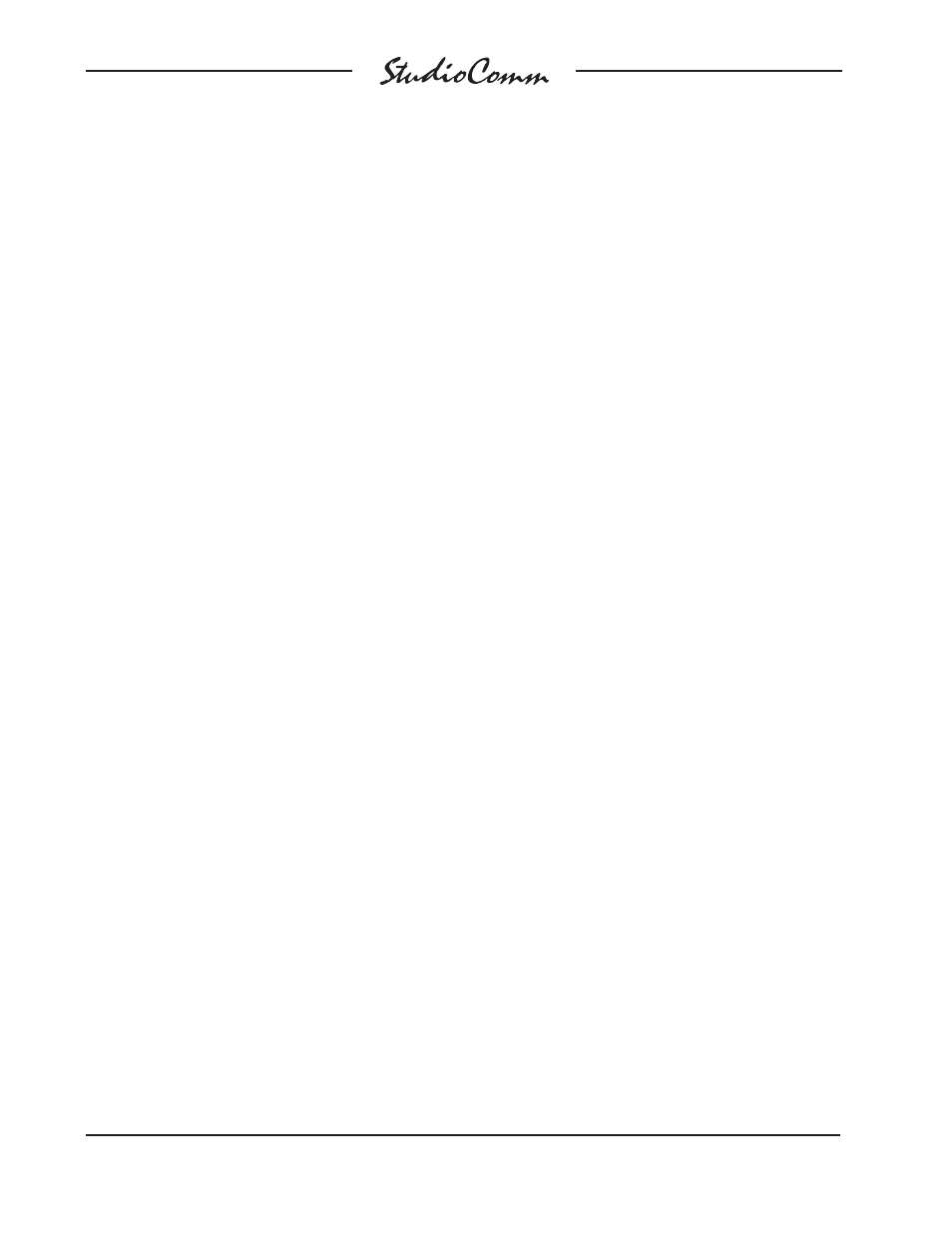Sync source, Sync input termination, Audio-synced-to-video sample rate – Studio Technologies 760-03 V.4.15 User Manual
Page 20: Reference level

Issue 3, April 2015
Model 760-03/77 User Guide
Page 20
Studio Technologies, Inc.
for Surround
The mute/solos bass management mode
can also be set for post-bass manage-
ment. When this mode is enabled a chan-
nel selected for soloing will cause only its
associated post-fader digital and analog
monitor output channels to remain ac-
tive. So if, for example, one of the main
surround input channels (one of the “5.”
channels) is selected for soloing then all
post-fader output channels except that one
will mute. The bass management filters
will remain enabled, thus sending only the
high-passed audio energy from the soloed
input channel to the soloed output channel.
Only if the LFE channel has been selected
for soloing will the subwoofer output re-
main active. Typically the only reason why
the post-bass management mode would
be selected is when troubleshooting issues
with the loudspeaker system.
Sync Source
The Model 760-03 requires that the desig-
nated external timing reference (sync) be
defined. Three of the choices—word clock,
DARS, and video—are associated with a
signal that is connected to the sync input
BNC connector. The fourth choice allows
the L/R input of the currently selected sur-
round or stereo digital audio input to serve
as the system’s sync source.
Sync Input Termination
The sync input circuitry can be configured
to terminate the signal connected to the
back-panel sync input BNC connector.
When termination is selected a 75 ohm
load is applied to the signal. When the
sync input is not terminated the input im-
pedance is very high, essentially applying
no load to the source. If the sync source
is connected only to the Model 760-03
then enabling termination is typically
appropriate. However, if the sync source is
being “shared” by multiple inputs then care
must be taken so that the signal is only ter-
minated by one device.
Audio-Synced-to-Video
Sample Rate
If a video sync signal is being used as the
Model 760-03’s timing reference the sample
rate of the connected digital audio signals
must be specified. In most cases the de-
fault value of 48 kHz will be appropriate, but
rates from 32 to 192 kHz are available.
Reference Level
For audio-with-picture applications it’s often
beneficial for monitoring to be done in refer-
ence to a known loudspeaker level. This is
often referred to as “mixing to 85 dB” on the
monitors. The StudioComm for Surround
system allows a precise post-fader surround
digital and analog monitor output level to be
stored, and then enabled by pressing the
Model 77 button labeled Reference Level.
Setting the reference level is very simple
but care is required. Typically this will be
done in reference to the surround monitor
output, rather than the stereo monitor
output:
1. Set up a precision sound pressure level
(SPL) measuring device at the desired
listening location.
2. Place the StudioComm system in the
normal operating mode, not the con-
figuration mode. Be certain that the dim,
mute all, reference level, and downmix
functions are not active. The remote
mute all and remote dim functions must
also not be active.
